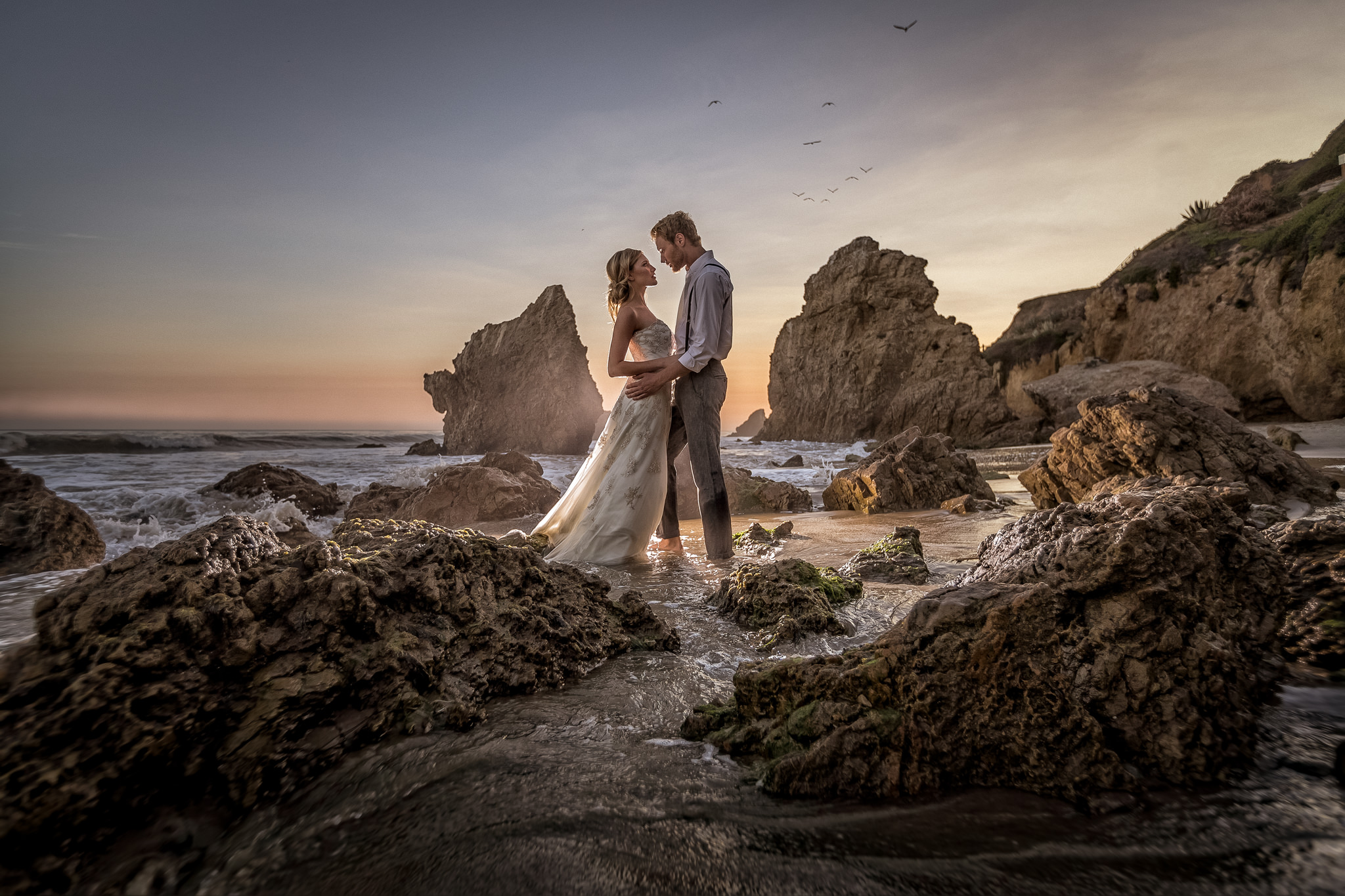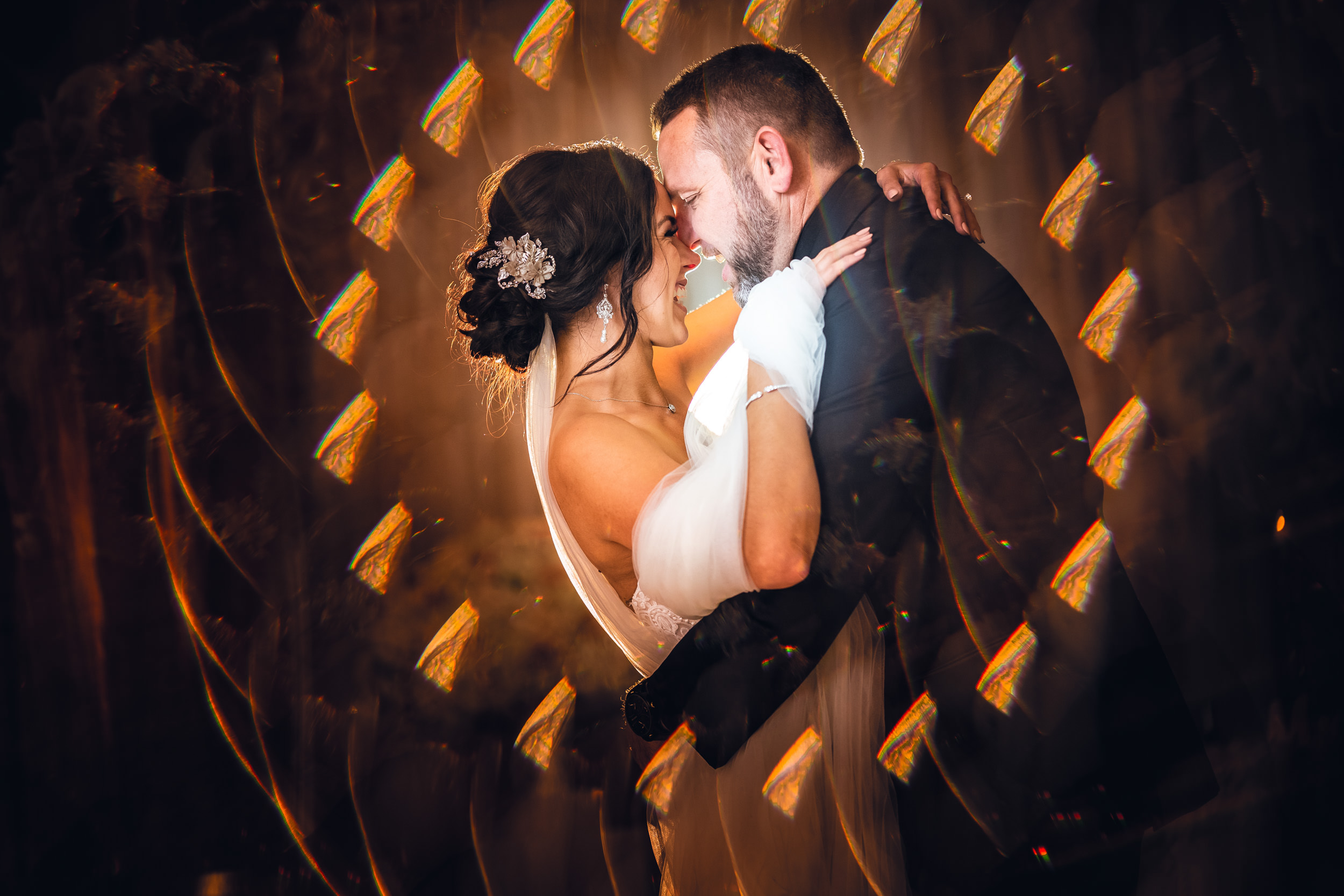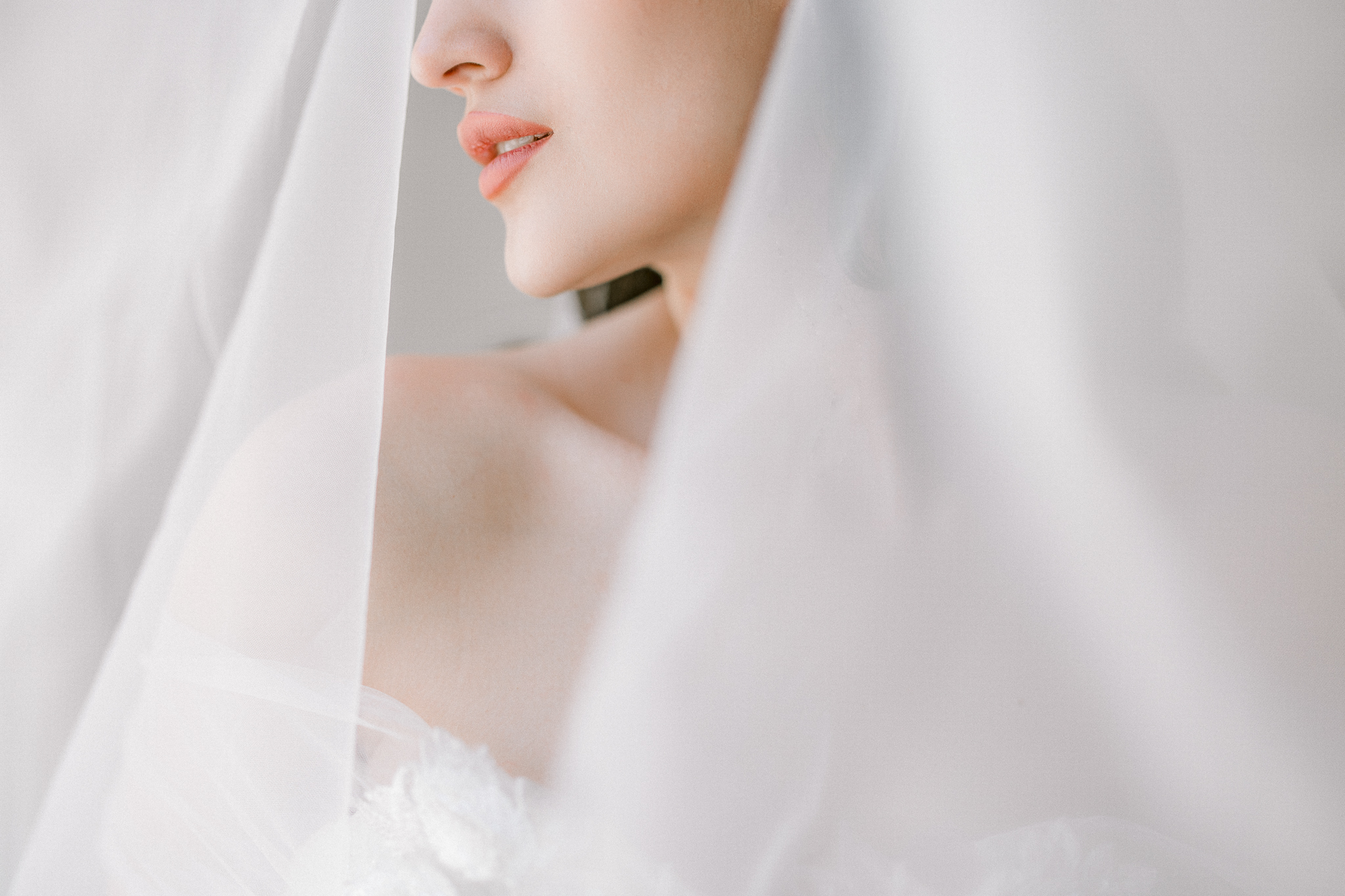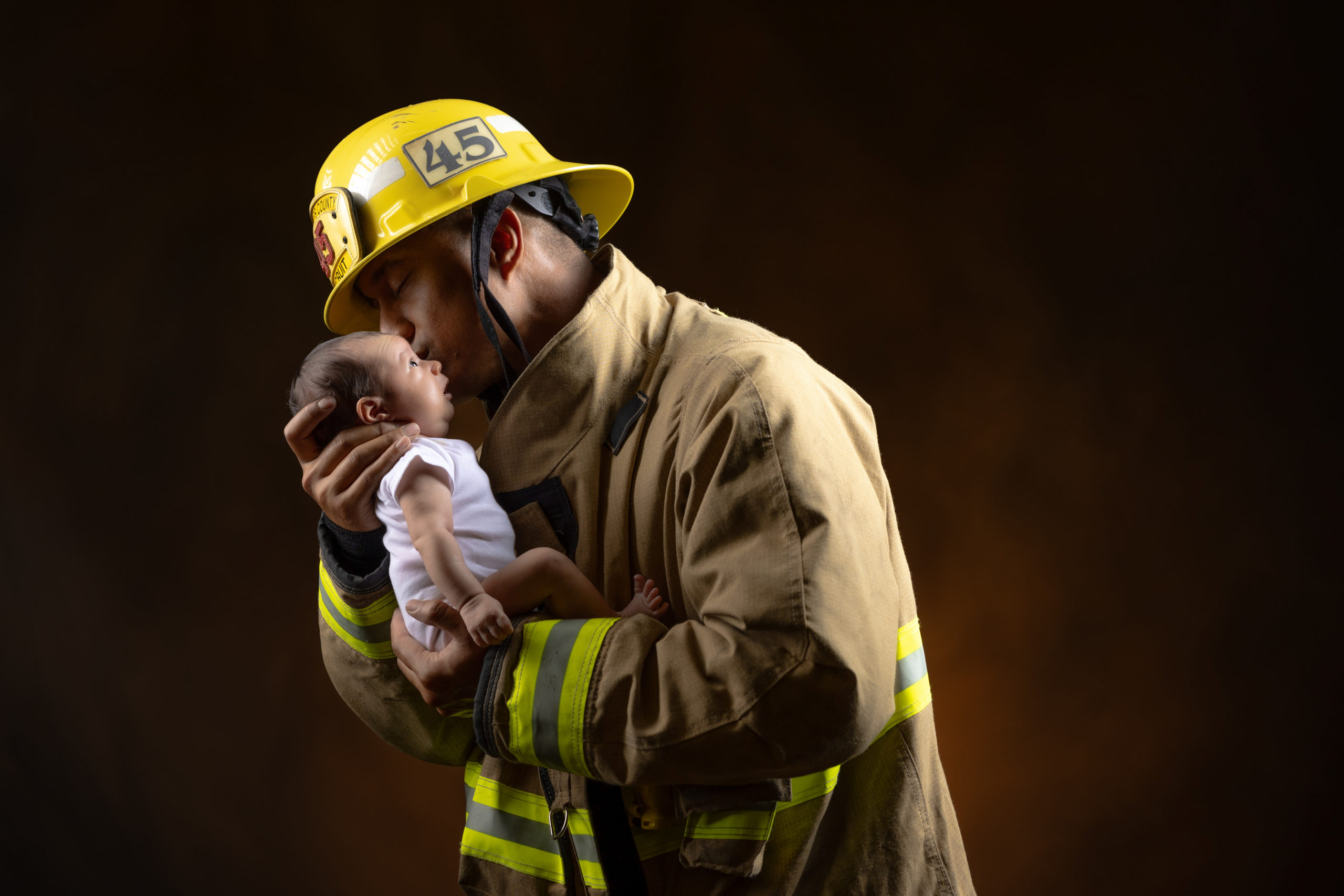Welcome to our first Photographer Friday. This will be a column that I will try to keep up on Fridays. We have had a growing number of fans and inquiries coming from fellow photographers, and we want to keep up with them. Also, I believe we are all a community that can only stand to better our industry by helping one another. We will try to feature guest bloggers, as well as behind the scenes videos, and reviews of equipment. With that in mind, let me get to our first order of business, a review of the King of the Red Rings, the 135mm F/2.0 from Canon. We will be reviewing this from a wedding photographer’s standpoint, so keep that in mind in the discussion below.
Jen and I just switched our gear set up, and we moved away from zoom lenses. This lens was the main reason why. When we were first starting, we were using zoom lenses. I saw a few images from the photographer on my 500px.com website (I would link to him, but he no longer has a 500px site, and I can’t remember his name). These images had metadata showing a combination of a Canon 5D Mark II, as well as the 135mm prime. The images were so crisp, sharp, and colorful, with the most fantastic bokeh. I had to do some more research. I ended up falling in love and last August I sold my 70-200 2.8 (non-is) and scooped up this bad boy from B&H.
As I do when I get new lenses, I set up a shoot with my almost wife Jen at Towsley Canyon in Santa Clarita. We shot this shoot on the way to date as the sun had just set, and we didn’t spend a whole lot of time at the location. As I took some of the images, I looked at the back of my camera, and I was just floored with the IQ on this lens. It has since become a staple of my style as a photographer, my brother from another mother. Up until I purchased the 85mm F/1.2L, 90% of our portrait work was done with this lens.

While no one can argue that any Canon “L” Prime will take amazing portraits, one has to ask themselves, does the image quality of this lens outweigh the practicality of a zoom? I mean let’s be honest, for wedding photography, the Canon 70-200 F/2.8 IS II is THE defacto lens for weddings and events. I would say at least 50% of wedding photographers in business for over a year will own this lens. You seriously cannot argue that it indeed has the image quality of a prime, and versatility that cannot be matched. While I have never owned this lens, I have used it extensively. I rent it every opportunity I can to convince myself that I need to buy it. So far it has been a strong want but not a need.
The most recent wedding that I brought the 70-200 along was a few months back at Robinson Ranch. I used the 70-200 quite a bit during the ceremony. However I noticed when formals came around, I was looking at the back of my camera, and I always felt like I was missing something. When I switched to the 135, my colors came out much better, the contrast was improved, and well, ya F/2.0. Much like my 35mm, it owns it’s focal length better that it’s zoom equivalent
I guess that the real reason you would use this lens is the ability to use F/2.0. Although during weddings, I will rarely shoot wide open unless it is during formals. This is because the DOF at F/2.0 is so shallow that it is hard to get your intended subject in focus if they are moving slightly.

I will say that the autofocus on this lens is better than any other lens I have owned. While we shoot with the 5D Mark II, which isn’t known to be an autofocus champ, I can still track moving subjects, with this lens, and can quickly and accurately lock focus in low light conditions (which is why in my opinion it bests the 85L).
Now, most people overrate sharpness when it comes to a lens. I would say there are six parts in testing the quality of glass, and each of them is individually important: Build Quality (including flare control), Color Rendition, Contrast, Bokeh Rendition, Autofocus, and oh yes, Sharpness. While this lens excels in all of those qualities, sharpness is its strong suit. When I use this lens in natural light at over 1/200 of a second, I can ALWAYS distinguish the eyelashes on my subject. Some people argue that this lens is too sharp for portraiture because it shows the imperfections of the skin much better than other lenses.
Now Canon makes a lot of great lenses. This, in my opinion, is one of the best. Most of Canon’s best lenses are EXPENSIVE, and the price does come into play when deciding what lens you are going to use in your business. This lens excels in that quality too. You can pick this lens up for around $1,000.00, which in my opinion makes it almost a no brainer for someone with a full-frame camera which does a lot of portrait work. It is the most inexpensive “L” lens we own, and in my opinion, has the best optical quality.
But is it for me?
This is something that you have to ask yourself. One of the things that I would consider is your sensor size. One hundred thirty-five may be too long if you use a crop sensor. We shoot with a 5D mainly, and we own a 550D (1.6 crops). The 135 rarely get seen on the plant unless I need 200mm (135mm x 1.6 FOVCF =216mm). Wedding photographers NEED versatility, and being an all-prime shooter; I understand the need for zooms in a wedding environment. I have decided that shooting with all prime forces allows me to interact with my subject and atmosphere a lot more. Rather than being stagnant, I get to explore new angles and get involved with my bride and groom. There are ALWAYS occasions when a zoom would be efficient for me. I can see in a portrait session a 70-200 allows you to go tight-middle-wide immediately, which will enable you to get more shots off. In a wedding environment, you can capture multiple looks of a single critical moment (we always have a second shooter to make sure we get those looks as well).

However, we can capture those moments at F/2.0, with a look that cannot be replicated by any other lens. I would say if you are starting in wedding photography, and you use a crop-sensor camera exclusively, a 70-200 may be a more useful lens for you. The 135 like most primes is a specialty lens that, once confident in using it, will yield excellent results. I would recommend at least renting it. You can get it for three days for $26.00 HERE.
So what do you think about using primes vs. zooms in wedding photography? Leave some comments below!
Michael Anthony Photography is looking for blog writers and fellow photographer guest bloggers alike. If you have something you would like to contribute, please send me an email at info@michaelanthonyphotography.com






7 Responses
Thank you for the thorough review! I’ve been considering making this my next lens purchase and you sealed the deal for me.
Great review. I love my 70-200 but have been thinking about switching for a while now!
[…] adjustment in post. Having that ability is amazing to us. Like I had said in my review of the Canon 135L F/2.0, this lens is a tool, and like the all-around wedding lens the 70-200 F/2.8 IS II, this lens has a […]
Thanks for this review I’m thinking about switching out my zoom for this prime! I’ve heard nothing but good things. Do you know offhand around what aperture you used for the exit ceremony photo? Thanks!
If you are shooting weddings and using the 70-200, I wouldn’t switch it out. These lenses work well together, and after using my 70-200 for weddings, I realize that it really is a must have
That was shot at f/2.0
I’m looking into using primes because I like the sharpness (and overall IQ), low light capability, and shallow DOF better with primes. I also want to use primes because I can’t afford to spend $3000+ dollars on new lenses at once, so the “modular” nature of adding 1 prime at a time to my bag is helpful. Meanwhile, I rent what I need to fill in the blanks.